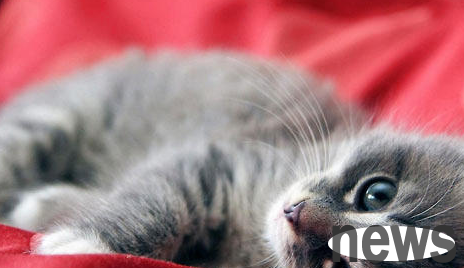Many heart diseases in cats are caused by congenital factors, and of course some are caused by later feeding. Heart diseases are generally not to be detected when cats are young. When they are about to grow old, the symptoms of heart disease will gradually occur. Different constitutional differences will produce various different symptoms, and septum hernia will also cause heart disease.

The so-called septum hernia refers to the occurrence of congenital defects in the diaphragm separated by the thoracic cavity and the abdominal cavity, and the stomach or intestinal duct enters the chest cavity. The most common is a defect on the right posterior side. The stomach or intestinal duct entering the chest cavity will cause difficulty in breathing because it compresses the lungs.
Peritoneal pericardial diaphragmatic hernia is the most common congenital pericardial malformation in cats. It is the abnormal embryonic development that causes the persistence of the pericardial and abdominal cavity connections on the midline of the abdomen, which is associated with some congenital abnormalities such as sternum malformations (especially in cats), anterior abdominal hernia and ventricular septal defects. Persian cats have breed susceptibility and the incidence rate in males is higher than that in females.
The clinical symptoms of pericardial pericardial diaphragmatic hernia depend on the nature and volume of the abdominal contents hernized. Some diseased animals do not have any clinical symptoms, and PPDH is diagnosed by physical examination. The animals with symptoms usually have gastrointestinal or respiratory symptoms: vomiting, diarrhea, anorexia, weight loss, abdominal pain, cough, and difficulty breathing, which are mostly caused by a large number of abdominal internal organs compressing the heart or lungs and abdominal organs (such as the liver and small intestine). The diagnosis of X-rays depends on the size of the defect and the volume of the hernized abdominal contents, and specific diagnostic results include enlarged heart profile, dorsal tracheal displacement, overlapping diaphragm and posterior edge of the heart, abnormal fat and/or gas density images within the heart profile. The abdominal X-ray image is empty. For cases that are not easy to diagnose in ordinary X-ray examinations, X-ray analysis can be used to evaluate the diaphragm. Inject water-soluble positive contrast agent into the abdominal cavity at a dose of 1 to 2 ml/kg, and then perform X-rays on the right, left, dorsal and dorsal positions to comprehensively evaluate the diaphragm. The appearance of contrast agent in the chest cavity can confirm diaphragm rupture. Barium meal angiography can show intestinal images that crosses the diaphragm and enters the pericardial cyst. Echocardiography is helpful for confirming and diagnosing suspicious animals, and can detect abnormal organ images in the pericardial area.
The surgical treatment in cases is the best choice. After reducing the hernia contents, the success rate of the hernia ring is usually relatively high. Conservative therapy is also available for animals without clinical symptoms.